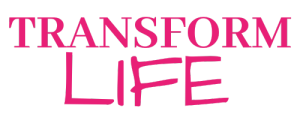
Bilingualism in the context of speech therapy involves understanding how learning two languages affects a child’s speech and language development and addressing any challenges that may arise. Here’s a more detailed look at how bilingualism intersects with speech therapy:
Understanding Bilingualism
1. Simultaneous vs. Sequential Bilingualism:
Simultaneous Bilingualism: When a child is exposed to two languages from birth or before age three. Both languages are developed at the same time.
Sequential Bilingualism: When a child learns a second language after establishing a foundation in the first language, typically after age three.
2. Language Milestones:
Bilingual children generally reach speech and language milestones at a similar rate to monolingual children, but they may mix languages (code-switching) or show different patterns in vocabulary development across both languages.
Speech Therapy Considerations
1. Assessment in Both Languages:
⦁ A thorough assessment in both languages is crucial to differentiate between a true language disorder and a difference due to learning two languages.
⦁ It’s important to avoid misdiagnosis, as some features of bilingual language development, like mixing languages, can be mistaken for a disorder.
2. Language Disorder vs. Language Difference:
⦁ A language disorder will affect both languages, while a language difference may show up in just one language, usually the less dominant one.
⦁ SLPs need to be trained to distinguish between these to provide appropriate therapy.
3. Cultural and Linguistic Sensitivity:
⦁ Speech therapy must be tailored to respect the child’s cultural and linguistic background. This includes using culturally appropriate materials and being aware of cultural norms that might influence communication styles.
Common Challenges in Bilingual Speech Therapy
1. Code-Switching:
⦁ This is a normal part of bilingual communication, where a child switches between languages within a conversation or even a sentence. It’s typically not a concern unless it interferes with the child’s ability to communicate effectively.
2. Language Dominance:
⦁ One language might become more dominant, especially if it is the primary language used in the environment (e.g., at school). Therapy may need to focus on supporting the weaker language to maintain balanced bilingualism.
3. Cross-Linguistic Influence:
⦁ Sometimes, structures from one language may influence the other, which can affect pronunciation, grammar, or vocabulary. Therapy might address these areas if they impact communication.
Approaches to Therapy
1. Bilingual Intervention:
Speech therapy can be provided in both languages, ensuring the child develops strong skills in both. This approach is ideal when the SLP is bilingual.
2. Monolingual Intervention with Bilingual Support:
If the SLP is not bilingual, therapy might be conducted in one language, with support from bilingual aides, family members, or materials to reinforce skills in the second language.
3. Family Involvement:
Engaging the family is key, especially when family members speak the child’s languages. They can help reinforce therapy strategies at home and ensure that both languages are supported.
4. Collaboration with Educators:
Working with teachers and other educators to ensure the child’s language needs are supported in the classroom is vital, especially in settings where only one language is used.
5. Outcomes and Goals
⦁ Effective Communication: The ultimate goal is for the child to be able to communicate effectively in all environments, whether they use one or both languages.
⦁ Academic and Social Success: Strong language skills in both languages can support better academic performance and social interactions.

Transform Life is a NDIS registered organisation that provide support for you and your family.
Book your consult with an experienced Therapist at Transform Life to explore how Positive Behavioural Support, Occupational Therapy and Speech Therapy can support you and your family.







